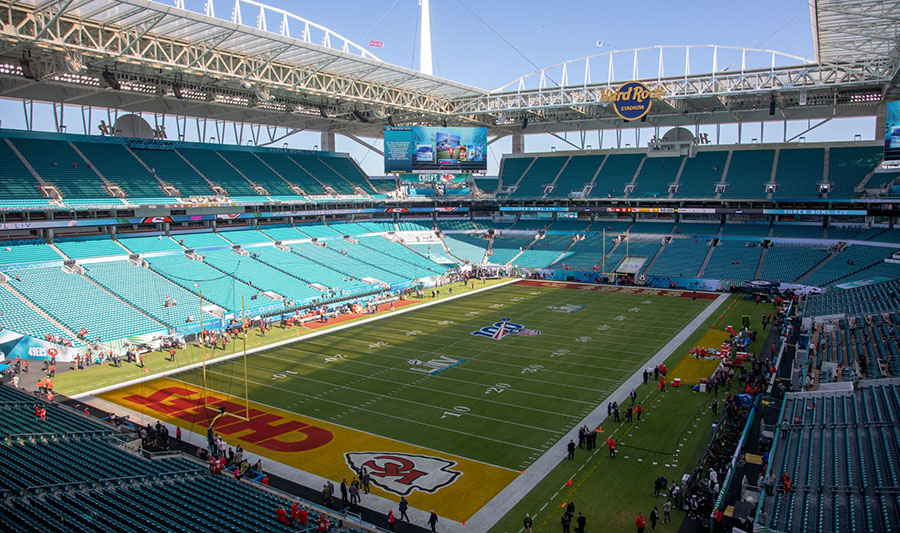A Marist Poll in conjunction with the Center for Sports Communication at Marist College finds 46 percent of self-described sports fans said they are spending less time watching live sports broadcasts than in the past.
The survey shows sports fans are tuning into fewer broadcasts of live sporting events and are also following individual sports less fervently; however, different demographic groups ascribe different reasons for their decreased interest and viewership.
“There was an assumption that once sports returned, sports fans would leap at the opportunity to watch more,” said Jane McManus, director of the Marist Center for Sports Communication. “But what ratings and the results of this poll are telling us is that fans may have other concerns at the moment.”
The Marist Poll also surveyed sports fans about the reasons for their decline in viewership. More than one-in-three, 35 percent, report concerns over COVID-19 has resulted in a decrease in watching live sports broadcasts. 21 percent said the availability of other entertainment options is the reason and one-in-five fans, 20 percent. said coverage of the 2020 election has taken precedence over live sports broadcasts. Additionally, 19 percent of sports fans attribute changes in the current rules and game experience to their decreased interest in watching live sporting events and the same proportion, 19 percent, said the amount of free time they have is the cause for a decline in watching.
Although sports fans’ viewing habits have changed regardless of gender, men and women attribute different reasons to their decline in interest with 40 percent of women citing concerns about COVID-19 compared with 32 percent of men. Women, 25 percent, also noted that they are less likely to watch live sports because there are other viewing options available. Additionally, 24 percent of women said the new rules, and the overall change in the game experience and, in particular, their ability to gather with other people, has affected their viewing habits.
Democrats and Republicans have a different take not only about the sport they favor most but also how they feel about the athletes’ and leagues’ vocal support of causes and current events.
When sports fans are asked to describe the viewing impact of athletes’ calls for racial justice, 70 percent of Republicans said they are less likely to watch live sports for this reason. Meanwhile, 61 percent of Democrats and a plurality of Independents, 47 percent, said athletes speaking out has not changed their viewing habits, while about 3-in-10 (31 percent and 24 percent, respectively) said this is the reason for tuning in more often. In fact, 27 percent of Black sports fans said they watch live sports broadcasts more as a result, significantly more than White fans (17 percent), with 44 percent of NASCAR fans saying this is the reason they watch fewer sporting events.
Republicans are significantly more likely than Democrats to cite the 2020 presidential election news cycle (22 percent-to-14 percent), changes to the game experience (28 percent-to-11 percent), and the amount of free time they have (23 percent-to-15 percent) as reasons for watching fewer sporting events. Democrats (38 percent) are more likely to cite concerns about the coronavirus as their reason for watching fewer sports broadcasts than Republicans (30 percent).
“Whatever the reason, far fewer people are making sports a priority during a fall in which many can’t gather together in large groups, and where bars and restaurants nationally may have reduced indoor capacity due to the coronavirus,” said Jane McManus, director, Marist Center for Sports Communication.
A comparison to a similar Marist Poll conducted in March 2017 shows an overall decline in Americans who consider themselves fans of specific professional sports leagues. Self-described NFL fans fell from 67 percent at that time to 52 percent currently. The proportion of baseball fans fell from 51 percent in March 2017 to 37 percent now and basketball fans fell seven points from 44 percent to 37 percent. NASCAR experienced a six-point drop, 22 percent to 16 percent in its fan base.
“The antipathy to social causes can’t account for a drop this large. It’s a whole combination of factors,” said Dr. Zachary Arth, assistant professor, Sports Communication, Marist College. “Take baseball, where Democrats (38 percent) and Republicans (37 percent) identify themselves as fans in roughly the same proportions. The sport faces a similar reduction in popularity as basketball, where the fan base is more diverse and more likely to identify as Democrats.”
For more on the report, go here.
Photo courtesy NFL
















